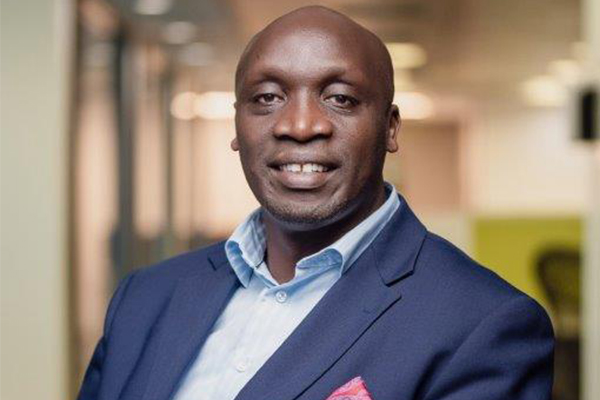By Marcia G. Ory, Regents and Distinguished Professor of Environmental and Occupational Health, Texas A&M University and Matthew Lee Smith, Co-Director of Texas A&M Center for Population Health and Aging, Texas A&M University
As coronavirus cases rise again, it can be hard for older adults to see any end to the need for social isolation and the loneliness that can come with it.
For months now, they have been following public health advice to reduce their risk of exposure by staying home, knowing an infection can have life-threatening complications. But sheltering at home has also meant staying distant from family, friends and the places that kept them active and engaged.
Inadvertently, the Covid-19 safety guidelines to self-isolate have created new health risks by leaving many older adults even more socially isolated and inactive than before.
As co-directors of the Texas A&M Center for Population Health and Aging, we have been examining social connectedness in old age and the detrimental effects of social isolation and loneliness on physical and mental health. We’re concerned about the paradox of government directives for physical distancing that protect older adults from Covid-19 but that might actually result in more social isolation.
We believe public health officials need to look closely at this potential risk in their messaging and identify strategies to minimize the unintended consequences.
How social isolation can harm human health
Even before the pandemic began, national studies indicated that nearly a quarter of older Americans were socially isolated and about one-third of middle-aged and older adults experienced loneliness.
Having few social connections and feeling isolated have been associated with myriad health-related conditions, including chronic diseases and psychiatric disorders. Social isolation is now viewed as a risk factor for premature death, similar to cigarette smoking, physical inactivity or obesity.
Social distancing during the pandemic was never meant to thwart social connections, but many family members, friends and neighbours of older adults are staying away to avoid exposing their loved ones to the virus. While that protects older adults from some health risks, the limited physical interactions reduce feelings of connectedness with others. It can also exacerbate other health risks.
Without frequent and meaningful social interactions and stimulation, older adults’ cognitive functioning can decline. As the days of isolation wear on, older adults are especially susceptible to depression and anxiety, and even suicidal thoughts.
Remaining at home also makes it harder to engage in healthy lifestyles, including physical activity and eating well.
Without exercise, muscles can weaken, leaving older adults more prone to falling. Inactivity can also lead to weight gain and other health problems, including declining heart and lung capacity. Access to healthy food is also necessary for staying healthy and for preventing and managing chronic conditions.
While not everyone will see the same impacts, the older adults most likely to be affected include those who already experience social isolation, live alone or have limited financial resources, as well as those with multiple physical ailments, mental health concerns and memory problems.
What can older adults do?
Although the immediate demand for Covid-19 screening, testing and treatment has made it more difficult for health care and aging organizations to reach out to older adults, many still offer opportunities for older adults to engage in a variety of meaningful ways within their homes or communities and to connect with helpful resources, services and programs. Some states, like Iowa, have set up free programs to connect isolated residents with counsellors and support groups by phone and online during the pandemic.
Older adults can also take steps on their own to stay active and engaged:
- Plan your day. While the days may seem to be an endless blur, keep up with daily routines like getting out of bed, getting dressed and being engaged with small activities. Planning time for online classes, calls with friends, reading, puzzles, cooking, gardening or home repairs can give meaning to the days.
- Stay physically active. Find exercises that can be done at home or in the immediate neighbourhood, like walking. Many virtual and online physical activity and health promotion programs are available, which can remotely foster engagement and connection to others.
- Know your risk. Take the AARP Foundation’s Connect2Affect tool to assess your risk for being socially isolated, and refer to the local assistance directory for support services you might need.
- Don’t be afraid to leave home, but do so wisely. New CDC guidelines emphasize what older adults can do to stay safe when leaving home. For example, when going outside, practice everyday preventive actions: Carry a cloth face covering, tissues and hand sanitizer; encourage others to wear cloth face coverings when out in public; and avoid close contact with others who are not wearing face masks to the extent possible.
- Think of others. Regularly reach out to others who may need to hear a friendly voice on the phone. Volunteering has been shown to have many positive health benefits, and there are online opportunities for doing so.
- Accept help from others. Many individuals and organizations are working hard to keep seniors socially connected. Remain open to accepting the kindness and support from family members, friends, health care providers and social service agencies.
Strategies for a healthier response
Despite the ongoing Covid-19 pandemic and need for social distancing, there are ways to help older adults remain connected.
Phone calls and online platforms offer older adults ways to safely connect with peers and professionals, as well as friends and family. Online learning and internet-based volunteering can also provide interaction and intellectual stimulation.
For older adults, staying healthy and safe means also staying socially connected while following public health recommendations. Public health efforts to stop the spread of Covid-19 should also take into account the importance of social connectivity for maintaining older adults’ physical and mental health.
















